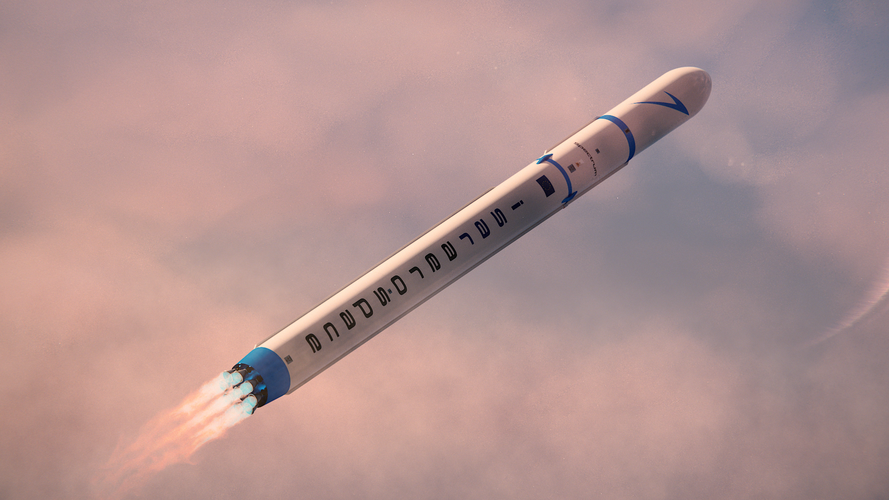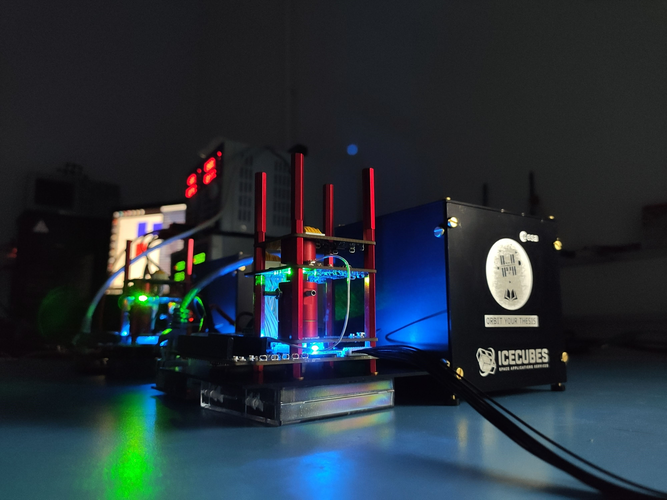
Copernical Team
Announcement of opportunity to fly payloads on Spectrum microlauncher

Announcement of opportunity to fly payloads on Spectrum microlauncher
Oscar the Qube
 Image:
Image:
Quantum technology or stage at a music festival? Both would have one thing in common: students.
Oscar-Qube, short for Optical Sensors based on CARbon materials: QUantum Belgium, is an experiment developed by a group of students from the University of Hasselt, Belgium. Part of ESA Education Office’s Orbit Your Thesis! programme, the experiment arrived at the International Space Station on Space X Dragon CR23 resupply mission yesterday.
This week, ESA astronaut Thomas Pesquet will install the experiment in the Ice Cubes Facility that offers commercial and educational access to the microgravity environment of the Space Station.
Oscar-Qube’s mission is
State of Russia's ISS segment sparks safety concerns

In recent years, the Russian segment of the ISS has experienced a string of problems, including air leaks caused by cracks, raising questions about the safety of the rotating crews onboard.
"Around 80 percent of the inflight systems on Russia's segment have reached the end of their service period," Vladimir Solovyov, chief engineer of the Energia rocket and space corporation, told the RIA Novosti news agency.
Energia—a manufacturer of spacecraft and space station components—is the leading developer of Russia's section of the ISS, a joint venture with the United States, Canada, Japan and the European Space Agency.
"This means that literally a day after the systems are fully exhausted, irreparable failures may begin," Solovyov added.
Citing concerns stemming from ageing hardware, Russia had previously indicated that it plans to leave the ISS after 2025 and launch its own orbital station.
On Monday, Solovyov said that small cracks had been discovered on Russia's Zarya cargo module.
Air Force selects Ohio base for new Cyber Warfare Wing
 The U.S. Air Force has selected the 179th Airlift Wing base in Mansfield, Ohio, as the location for the Air National Guard's first Cyber Warfare Wing.
Col. Todd Thomas, 179th Airlift Wing commander, said in a press release Thursday it would be a difficult transition, but a change that he strongly believes the airmen can make.
"Since becoming the wing commander, I have always told
The U.S. Air Force has selected the 179th Airlift Wing base in Mansfield, Ohio, as the location for the Air National Guard's first Cyber Warfare Wing.
Col. Todd Thomas, 179th Airlift Wing commander, said in a press release Thursday it would be a difficult transition, but a change that he strongly believes the airmen can make.
"Since becoming the wing commander, I have always told Russia confident in arms industry despite 'hostile' US sanctions
 Russia said Tuesday it was confident for the future of its arms industry even though the country faces what a senior official described as "unfair competition" and sanctions from the United States.
Moscow in recent years has worked to expand military partnerships abroad, a trend that has spurred criticism and concerns from Western capitals.
"We are doing everything we can to maintain our
Russia said Tuesday it was confident for the future of its arms industry even though the country faces what a senior official described as "unfair competition" and sanctions from the United States.
Moscow in recent years has worked to expand military partnerships abroad, a trend that has spurred criticism and concerns from Western capitals.
"We are doing everything we can to maintain our Netherlands completes deal to buy PAC-3 missile defense units
 US and Dutch officials recently formalized an agreement for the Netherlands to purchase Lockheed Martin's PAC-3 Missile Segment Enhancement (MSE) interceptors and related support equipment. With the signing, the Netherlands becomes the 12th customer of PAC-3 MSE and advances its missile defense technology from the PAC-3 Cost Reduction Initiative (CRI) the country acquired in 2004.
"We're h
US and Dutch officials recently formalized an agreement for the Netherlands to purchase Lockheed Martin's PAC-3 Missile Segment Enhancement (MSE) interceptors and related support equipment. With the signing, the Netherlands becomes the 12th customer of PAC-3 MSE and advances its missile defense technology from the PAC-3 Cost Reduction Initiative (CRI) the country acquired in 2004.
"We're h In a first, scientists capture a 'quantum tug' between neighboring water molecules
 Water is the most abundant yet least understood liquid in nature. It exhibits many strange behaviors that scientists still struggle to explain. While most liquids get denser as they get colder, water is most dense at 39 degrees Fahrenheit, just above its freezing point. This is why ice floats to the top of a drinking glass and lakes freeze from the surface down, allowing marine life to survive c
Water is the most abundant yet least understood liquid in nature. It exhibits many strange behaviors that scientists still struggle to explain. While most liquids get denser as they get colder, water is most dense at 39 degrees Fahrenheit, just above its freezing point. This is why ice floats to the top of a drinking glass and lakes freeze from the surface down, allowing marine life to survive c Space exploration priority of nation's sci-tech agenda
 President emphasizes cooperation on making bigger contributions to well-being of mankind
China is working on several huge space programs that aim to push forward the frontiers of its science, technology, engineering and exploration.
Once these programs are completed, the nation will have a massive space station, an unmanned outpost and more robots on the moon, and it is attempting to
President emphasizes cooperation on making bigger contributions to well-being of mankind
China is working on several huge space programs that aim to push forward the frontiers of its science, technology, engineering and exploration.
Once these programs are completed, the nation will have a massive space station, an unmanned outpost and more robots on the moon, and it is attempting to Galaxies pump out contaminated exhausts
 A team of astronomers led by Alex Cameron and Deanne Fisher from the ARC Centre of Excellence for All Sky Astrophysics in 3 Dimensions (ASTRO 3D) used a new imaging system on at the WM Keck Observatory in Hawaii to confirm that what flows into a galaxy is a lot cleaner than what flows out.
"Enormous clouds of gas are pulled into galaxies and used in the process of making stars," said co-le
A team of astronomers led by Alex Cameron and Deanne Fisher from the ARC Centre of Excellence for All Sky Astrophysics in 3 Dimensions (ASTRO 3D) used a new imaging system on at the WM Keck Observatory in Hawaii to confirm that what flows into a galaxy is a lot cleaner than what flows out.
"Enormous clouds of gas are pulled into galaxies and used in the process of making stars," said co-le World's first space junk cleaner satellite successfully picks up orbital debris
 According to the Union of Concerned Scientists' database, there are more than 3,300 functioning satellites in orbit and thousands of pieces of junk that can be traced, including discarded boosters, derelict satellites, and pieces that have fallen off of vessels.
In a major development that may ease concerns that dead satellites are being left to litter space, Japan's private firm Astroscal
According to the Union of Concerned Scientists' database, there are more than 3,300 functioning satellites in orbit and thousands of pieces of junk that can be traced, including discarded boosters, derelict satellites, and pieces that have fallen off of vessels.
In a major development that may ease concerns that dead satellites are being left to litter space, Japan's private firm Astroscal 
